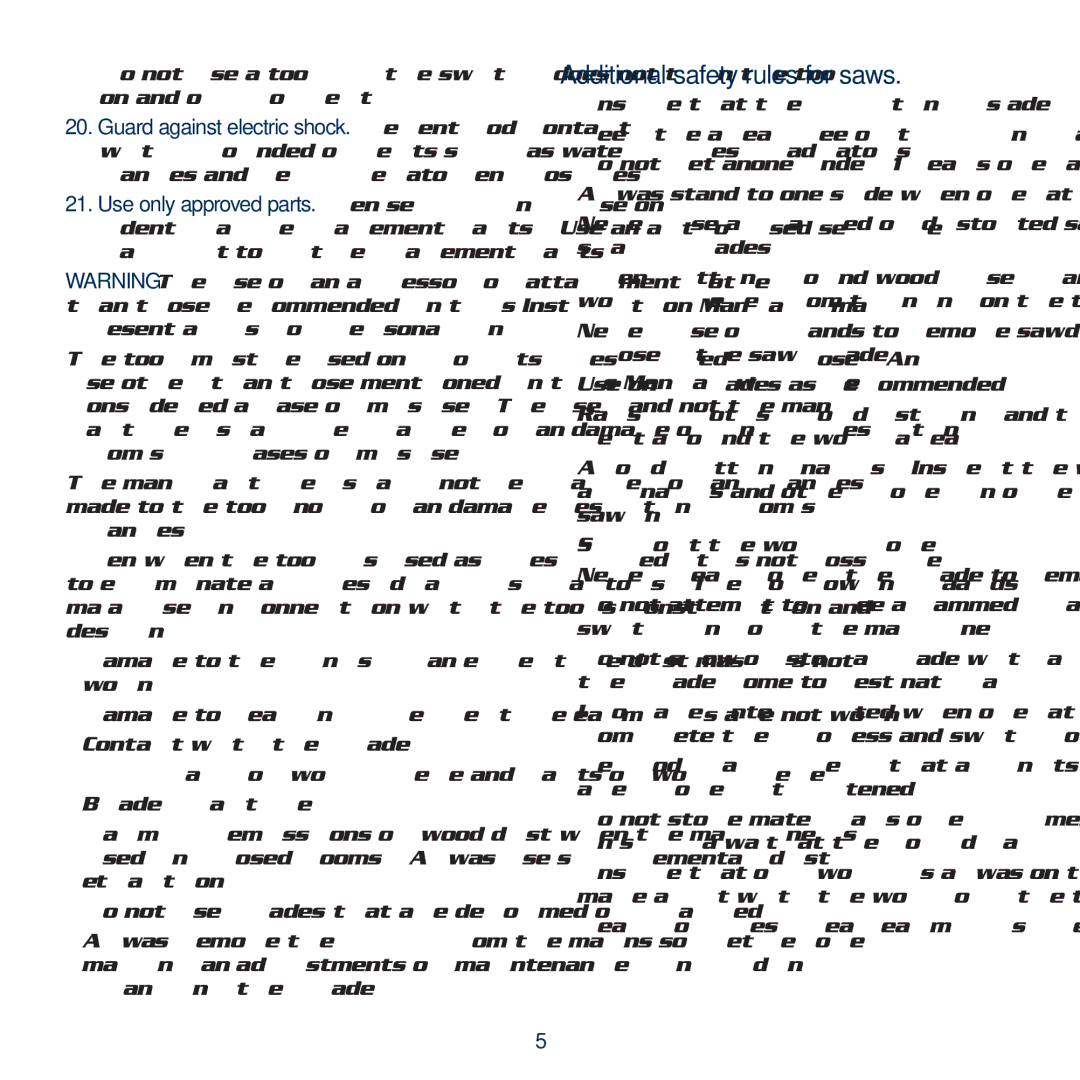Do not use a tool if the switch does not turn the tool on and off correctly.
20.Guard against electric shock. Prevent body contact with grounded objects such as water pipes, radiators, ranges and refrigerator enclosures.
21.Use only approved parts. When servicing, use only identical replacement parts. Use an authorised service facility to fit replacement parts.
WARNING. The use of an accessory or attachment, other than those recommended in this Instruction Manual, may present a risk of personal injury.
The tool must be used only for its prescribed purpose. Any use other than those mentioned in this Manual will be considered a case of misuse. The user and not the manu- facturer shall be liable for any damage or injury resulting from such cases of misuse.
The manufacturer shall not be liable for any changes made to the tool nor for any damage resulting from such changes.
Even when the tool is used as prescribed it is not possible to eliminate all residual risk factors. The following hazards may arise in connection with the tool’s construction and design:
•Damage to the lungs if an effective dust mask is not worn.
•Damage to hearing if effective earmuffs are not worn.
•Contact with the blade.
•Kickback of work piece and parts of work piece.
•Blade fracture.
•Harmful emissions of wood dust when the machine is used in closed rooms. Always use supplementary dust extraction.
•Do not use blades that are deformed or cracked...
•Always remove the plug from the mains socket before making any adjustments or maintenance, including changing the blade.
Additional safety rules for saws.
•Ensure that the lighting is adequate.
•Keep the area free of tripping hazards.
•Do not let anyone under 18 years operate this saw.
•Always stand to one side when operating the saw.
•Never use a cracked or distorted saw blade. Only use sharp blades.
•When cutting round wood, use clamps that prevent the work piece from turning on the table.
•Never use your hands to remove sawdust, chips or waste close by the saw blade.
•Use only blades as recommended.
•Rags, cloths, cord, string and the like should never be left around the work area.
•Avoid cutting nails. Inspect the workpiece and remove all nails and other foreign objects before beginning sawing.
•Support the work properly.
•Never reach over the blade to remove waste or off cuts.
•Do not attempt to free a jammed blade before first switching off the machine.
•Do not slow or stop a blade with a piece of wood. Let the blade come to rest naturally.
•If you are interrupted when operating the saw, complete the process and switch off before looking up.
•Periodically check that all nuts, bolts and other fixings are properly tightened.
•Do not store materials or equipment above a machine in such a way that they could fall into it.
•Ensure that your work is always on the table. Never make a cut with the work off the table.
•Wear goggles. Wear earmuffs. Wear a breathing mask
5
